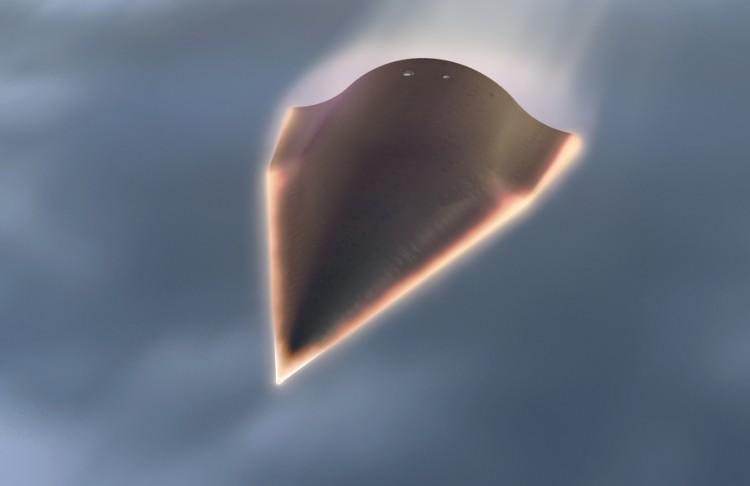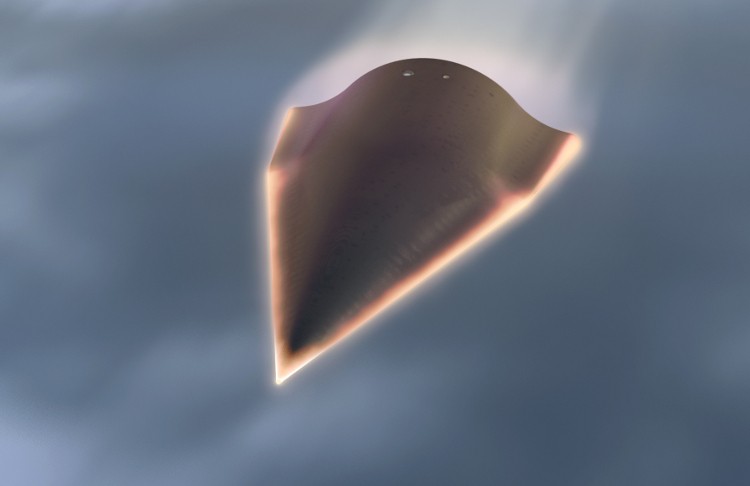The Falcon Hypersonic Technology Vehicle (HTV-2) blasted off from California’s Vandenberg Airforce Base on Aug. 11, and hasn’t been seen since. Researchers said the unmanned craft was hurling through space at 13,000 mph, but they lost track of it after just nine minutes of flight.
Several monitoring stations were positioned along the HTV-2 flight path, but none could detect the 3.6 mile-per-second moving target. “Downrange assets did not reacquire tracking or telemetry,” Defense Advanced Research Project Agency (DARPA) Tweeted about an hour after launch.
As a safety precaution, the military research agency designed the remote-controlled HTV-2 to terminate itself if control and contact were lost—a video simulation of the Falcon illustrates the craft rolling over and diving into the water below. DARPA expects that their hypersonic test vehicle is now somewhere in the Pacific Ocean.
The HTV-2’s maiden voyage on April 22, 2010, met with similar results, yet researchers insist that both missions provided invaluable information for further development.
While tracking the vehicle has proven challenging, engineers have successfully met the need for speed—the DARPA boasts that its HTV-2 aircraft can glide at Mach 20 or more (compare this to the then revolutionary 2004 flight of NASA’s X-43A which reached speeds of just over Mach 9). At such an amazing speed, New York to Los Angeles would be a quick trip for the Falcon—about 12 minutes.
But don’t expect this technology in commuter travel anytime soon. The HTV-2 is part of the Pentagon’s Prompt Global Strike (PGS) program. The goal of this program is to design a system that can strike a target anywhere in the world in less than an hour.
While PGS certainly has its critics, recently appointed Defense Secretary Leon Panetta (and former CIA director) has given his full support to the program. In a recent testimony submitted to the U.S. Senate Armed Services Committee, Panetta noted that PGS “may be the only systems available in situations where a fleeting, serious threat was located in a region not readily accessible by other means.”
There are restrictions on how this quick-strike goal can be met. While some analysts believe that PGS objectives can be accomplished through long-range ballistic missiles armed with conventional warheads, U.S. lawmakers and skittish Russian leaders have expressed concern that ballistic launches could be mistaken for a nuclear attack. In an effort to avoid this scenario, the DARPA has been exploring non-ballistic solutions such as the HTV-2.
The HTV-2 is launched from a rocket into sub-Earth orbit. Once the vehicle detaches, it’s designed to fly through the upper atmosphere and maneuvered to a desired target. At least that’s how it should work in theory. In practice, there are still some kinks to be worked out.
“Here’s what we know,” said Air Force Maj. Chris Schulz, Ph.D. in aerospace engineering, and HTV-2 program manager in a statement. “We know how to boost the aircraft to near space. We know how to insert the aircraft into atmospheric hypersonic flight. We do not yet know how to achieve the desired control during the aerodynamic phase of flight. It’s vexing; I’m confident there is a solution. We have to find it.”
Prior to the Aug. 11 flight, the HTV-2 was put through sophisticated simulations and extensive wind tunnel tests. But according to Schulz, simulations are limited. Wind tunnel simulations can only recreate Mach 15 conditions. To see how the HTV-2 operates under its full Mach 22 potential, real life research is crucial.
“High-Mach flight in the atmosphere is virtually uncharted territory,” added Schulz.
Failures and setbacks are to be expected when pioneering any technology, but perfecting the Falcon could be a costly endeavor. After just two tests the HTV-2 has cost $308 million; estimates for developing a fully functional glider have ran as high as $10 billion.
Fastest Plane Ever Built, Lost in Under 10 Minutes
An unmanned test vehicle has been lost after only nine minutes of flight. The plane was going over 13,000 miles per hour when it was lost.

By Conan Milner
8/15/2011
Updated: 10/1/2015





